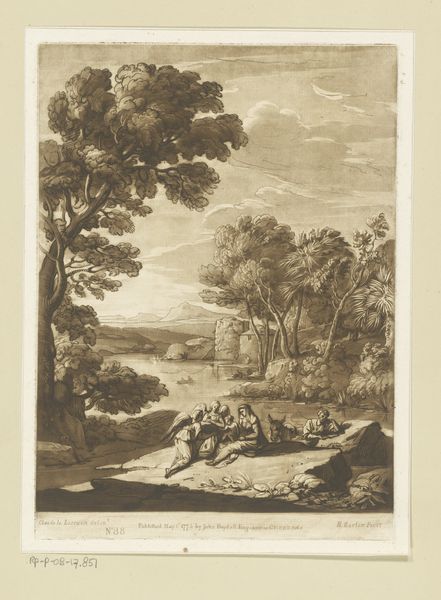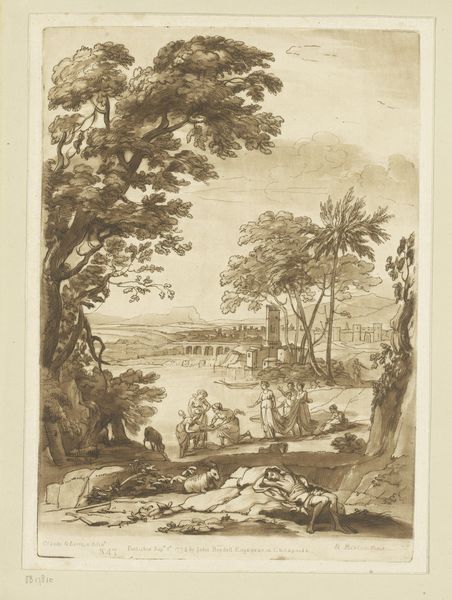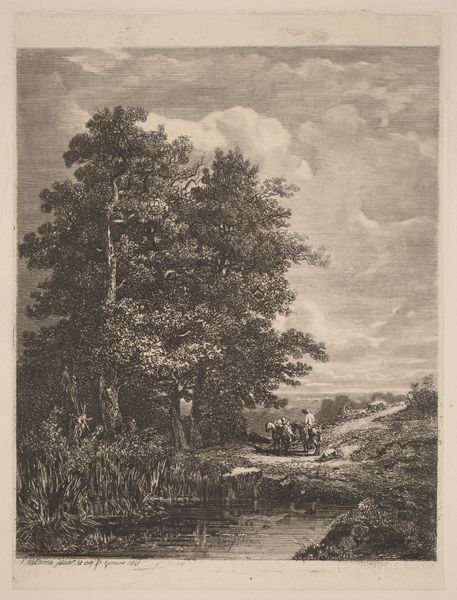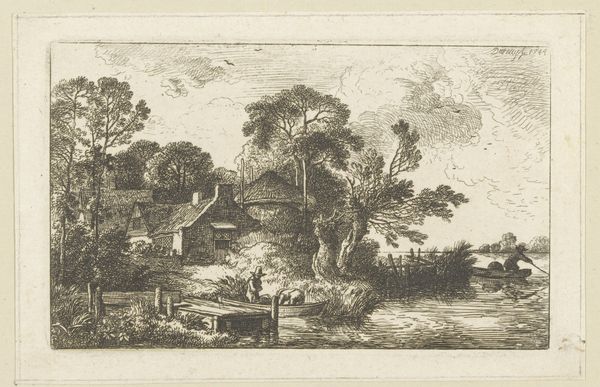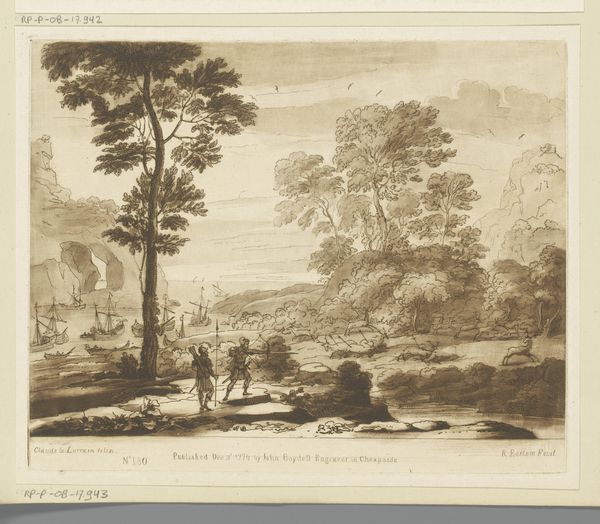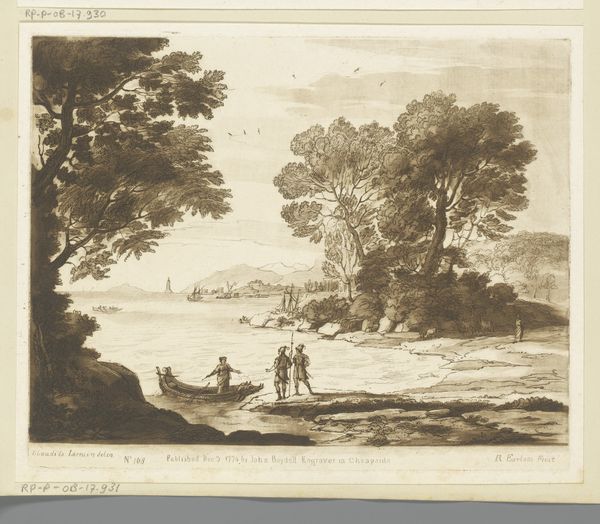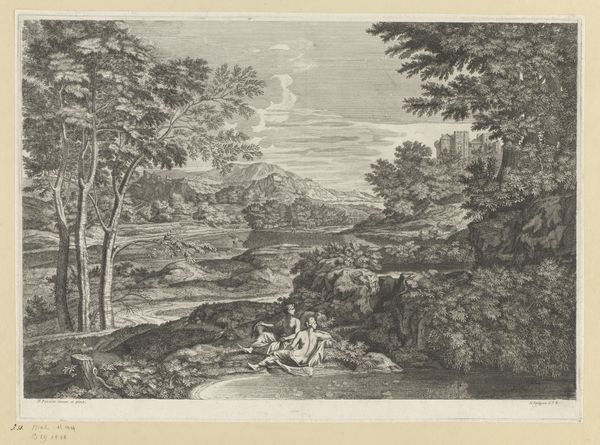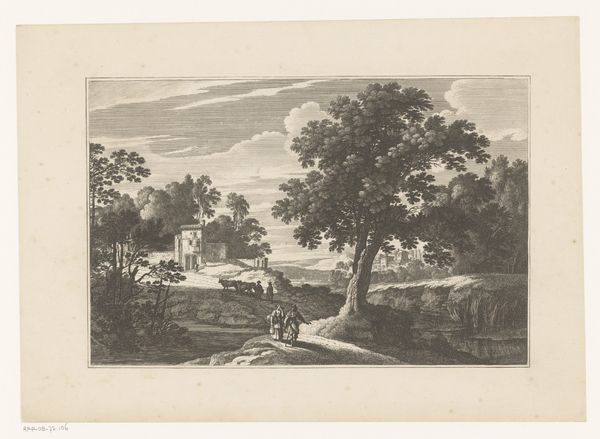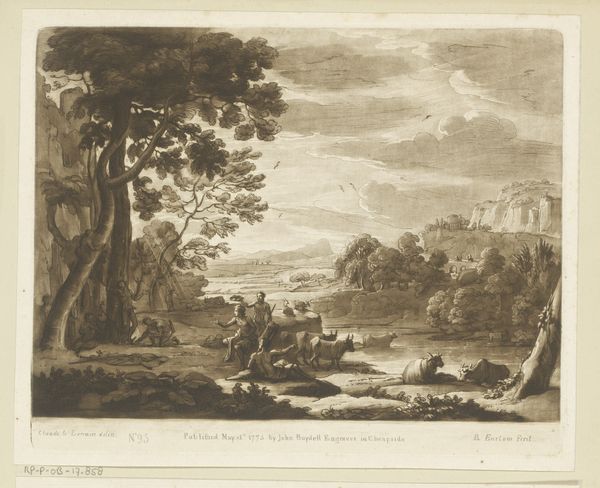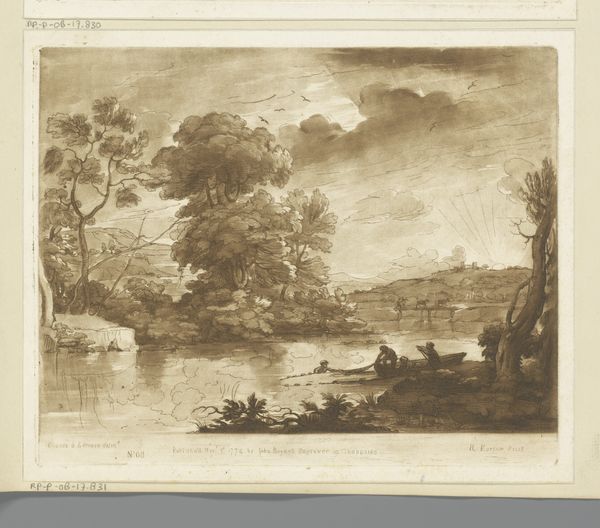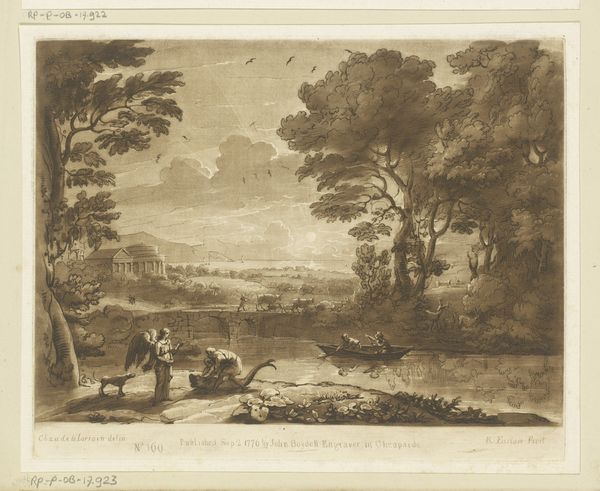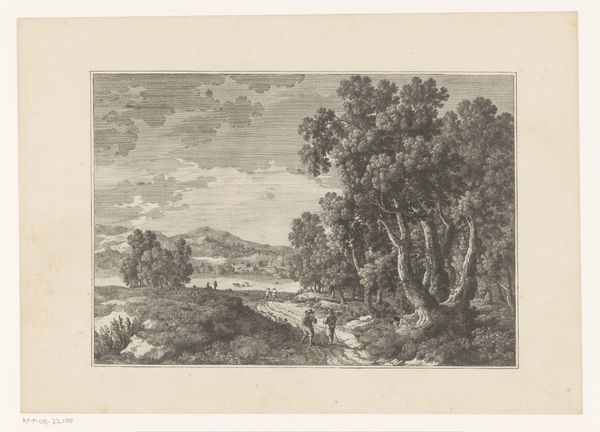
drawing, etching, ink, engraving
#
drawing
#
narrative-art
#
etching
#
landscape
#
ink
#
engraving
Dimensions: height 270 mm, width 191 mm
Copyright: Rijks Museum: Open Domain
Curator: This is "Coastal Landscape with Tobias and the Angel," possibly created between 1774 and 1779, attributed to Richard Earlom. The Rijksmuseum holds this drawing created using ink, etching, and engraving techniques. Editor: There's a melancholy to this landscape. It’s dreamlike, the sepia tones giving it an almost antique quality. Curator: Exactly. Beyond the aesthetic, consider the context. Landscape art in this period became a vehicle for national identity and territorial claims. How might a narrative like Tobias, about finding one’s way, fit within such themes? Editor: Good point. We should explore this artwork’s implicit ideologies regarding selfhood, divine guidance, and perhaps, a more profound struggle for place. Look at how vulnerable Tobias seems, kneeling as the angel guides. Curator: Tobias is at a crossroads, literally and figuratively. The architecture in the landscape hints at powerful patrons and societal structures determining his path. How does this artwork challenge or reinforce conventions regarding who is allowed to navigate this terrain freely? Editor: It's interesting you bring up power because while the tower signifies that, the landscape engulfs it, nearly minimizing any notions of man-made power. We have to also account for the religious symbolism embedded in the angel, divine protection amid landscape ownership. Curator: It is a potent message to highlight. Religion always plays a role, providing justifications and meaning that become intrinsically woven into cultural identity. And we should address how accessible this landscape, and perhaps this narrative, would have been at that time, across different classes. Editor: Looking closely at Earlom's technique—the layered etching and engraving—adds dimension to a seemingly flat representation of landscape, much in the same way history is excavated through diverse voices layering their insights to construct larger narratives. Curator: Beautifully put. By engaging in the discourse surrounding an artwork, we activate and disrupt existing knowledge hierarchies while questioning how interpretations transform across generations.
Comments
No comments
Be the first to comment and join the conversation on the ultimate creative platform.
